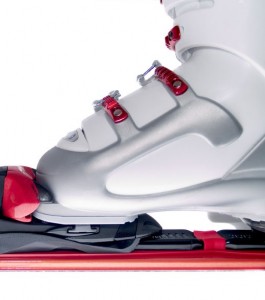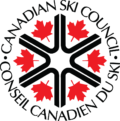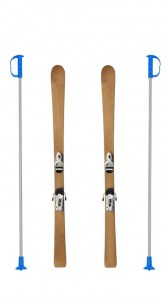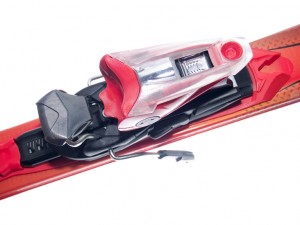Renting Ski Equipment
You’ve decided renting is the way to go. Great! Here are some tips to get you in and out with the best fitting, most reliable gear for you.
WHEN TO HEAD TO THE RENTAL SHOP
Head to the rental shop before your first day on the hill. Try and go either in the morning or early afternoon when crowds are going to be lightest. Don’t forget to bring your I.D as it is a requirement for renting ski equipment.
ANSWER THEIR QUESTIONS. HONESTLY.
Discuss your skiing experience with the technician. If you’ve never been on skis, make sure you tell them this. If you tried to teach yourself and failed, admit it. You’ll be happiest on the hill when your settings match your skill level.
FORMS
Be truthful about your weight, height, age and skier type (Beginners are “Type I”). These factors determine your DIN (Deutsch Industrial Norm) setting on the bindings. DIN numbers correspond to the torque needed to jar a ski boot out of the binding’s toe piece. The technician doesn’t care what you weigh or how old you are, but he or she needs to know these accurate numbers to set your binding properly.
Read the fine print of the agreement. It will tell you you’re responsible for damages or stolen equipment. Some shops allow you to exchange equipment for better fitting gear or a refund. Make sure to ask about it!
SKIS
Shops try to cover all the bases by carrying several classes of equipment packages. Newer and more advanced equipment might cost more, but novice skiers will benefit greatly from this upgrade as you succeed more quickly during the learning process.
Make sure you have shaped skis, which are wider at the tip and tail than the older, straight skis. Many rental shops now have shaped skis in their beginner packages, but believe it or not, some shops will still pull old straight skis from their back on the racks for beginners. It’s a good question to ask.
Length: skis should be about chin high for beginners. Specifically, the tip should land between your chin and your nose. Of course, edges should be sharp (tuned), and bottoms smooth (waxed).

BOOTS
Bring or wear your own dry ski socks. If you don’t have them, some shops have pairs you can borrow. Do it. Street socks can alter the fit completely. Don’t forget to tell the rental technician about anything wrong or different about your feet: surgeries, bumps, etc.
After sliding into the four-buckle boot (you don’t want a rear-entry boot), your foot should feel snug everywhere. Comfortably snug – not painful! Unlike with street shoes, in ski boots your toes should touch the front until you drive your knees forward. Then your toes should pull back, leaving a little wiggle room for comfort.
Note: don’t tuck your pant legs into your boots. The boots are designed to hug your shin and calf.
BINDINGS
Aside from adjusting the bindings to your “DIN” as mentioned above, make sure the tech shows you how your bindings work, and how to clear snow out of them. Snow that builds up on the bottoms of your boots can interfere with the binding connection.
SWITCHING OUT
Just because you don’t own your own gear doesn’t mean you don’t deserve to feel comfortable and safe. If you feel anytime that your equipment is inadequate, dangerous or performing under expectations, go back and explain it to your rental shop. Chances are they’ll switch it out for something you approve of.
Content courtesy of SnowSports Industries America | SIA and Snowlink.com




